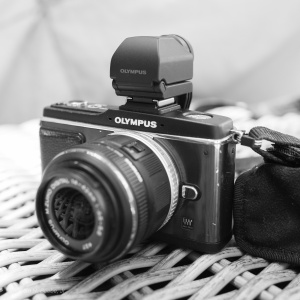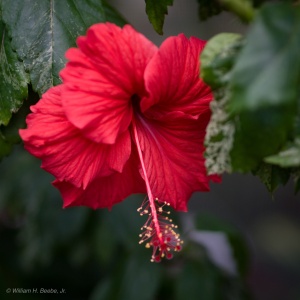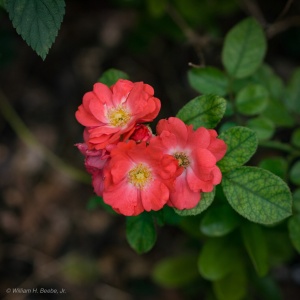I have a Panasonic Lumix GH4, and today I fixed it. Why did I have to fix it? Because I followed “advice” on the Internet and YouTube about how I should configure my GH4 to make it work as fabulously as possible. The problem is while that “fabulous advice” might work great for those giving that advice, it never seems to work so fabulously for me.
Case in point: back button focusing. Back button focusing is the act of using a separate control (usually a back button on the camera body, hence the name) for the specific task of electronic focusing. Cameras don’t come this way when you purchase them. You have to separate the actions of autofocus and shutter activation. Cameras come initially with both functions tied to the shutter button on the front of the camera. When you begin the process of composition, you aim the camera towards the subject you wish to capture, and then as you begin to squeeze the shutter button the camera begins to auto focus. As you press further the auto focusing stops and the shutter it tripped. The process is fast enough that under most circumstances the proper focus is quickly reached right when the exposure is made.
But there appear to be certain use cases where this doesn’t work well enough. On the GH4 (and the G9, which I also own) you can separate the autofocus from the shutter, assigning autofocus to the AE/EF Lock button on the back of the camera to the immediate right of the eyepiece. You thus have to learn to hit the back button focus button first with your thumb, then trip the shutter with your forefinger. Two actions that require the development of muscle memory.
With back button focus you can literally focus on your subject, then trip the shutter as many times in rapid succession as necessary to capture that “decisive moment” in the action, or to begin video recording. It can overcome a problem with high-speed continuous shooting, where digital cameras will stop focusing if the continuous shooting rate goes above a certain frames/second. It’s not so much that the camera can’t keep up, but the lens itself can’t go through its mechanical focusing fast enough. This side-steps that issue by allowing the photographer to focus on the area of interest, then fire off a rapid sequence if necessary. For video, especially on cameras using contrast detect autofocus, the lens can hunt during a recording sequence and ruin that bit of video on playback.
The problem with back button autofucus is two-fold. First, there’s no guarantee (no matter what the camera makers promise) that autofocus will be 100% accurate every time. If you’re just a little off the focus mark, then every exposure or video clip after that will also be a little off. Second, and more significant for me, the back button focus button (or the AF/AE Lock button) is right next to the video record button. You don’t know how many times I tripped the video record before I was ready, or tripped it when I was trying to make a regular photograph. In the end I got tired of those misses and having to go back in and delete the unwanted footage, and put it all back the way it was.
Now, I do my pre-focusing the old school way by putting my lenses in manual focus and using the GH4’s focus peaking, where the camera outlines whatever is in focus with a color (orange in my case) showing what it believes is in focus. That’s good enough for subjects far enough away and with reasonable depth of field. Closer in, and with enough time, I can “punch in” or magnify the center section of the subject and use that to fine tune the focus onto exactly what I want.
The key is manual focus lenses. I have a collection of Olympus micro four third lenses (1.8/17mm, 1.2/17mm PRO, 12-40mm PRO, 12-100mm PRO) that have a focus clutch on the front end of the lens. Pull the clutch back and I’m immediately in manual focus. Push it back and I’m immediately in auto focus. No having to set a special button or go menu diving. For me I’ve discovered that manual focus is far better than back button focus, and that my muscle memory is better served when I use two hands to handle both focus and exposure.
The biggest lesson from all of this is stay away from the self-proclaimed experts and learn the camera on your own. It comes with a manual, and it’s clear enough reading. Do your own work learning how to use the GH4 (or any other camera for that matter) instead of being lazy and leaning on somebody else.






You must be logged in to post a comment.